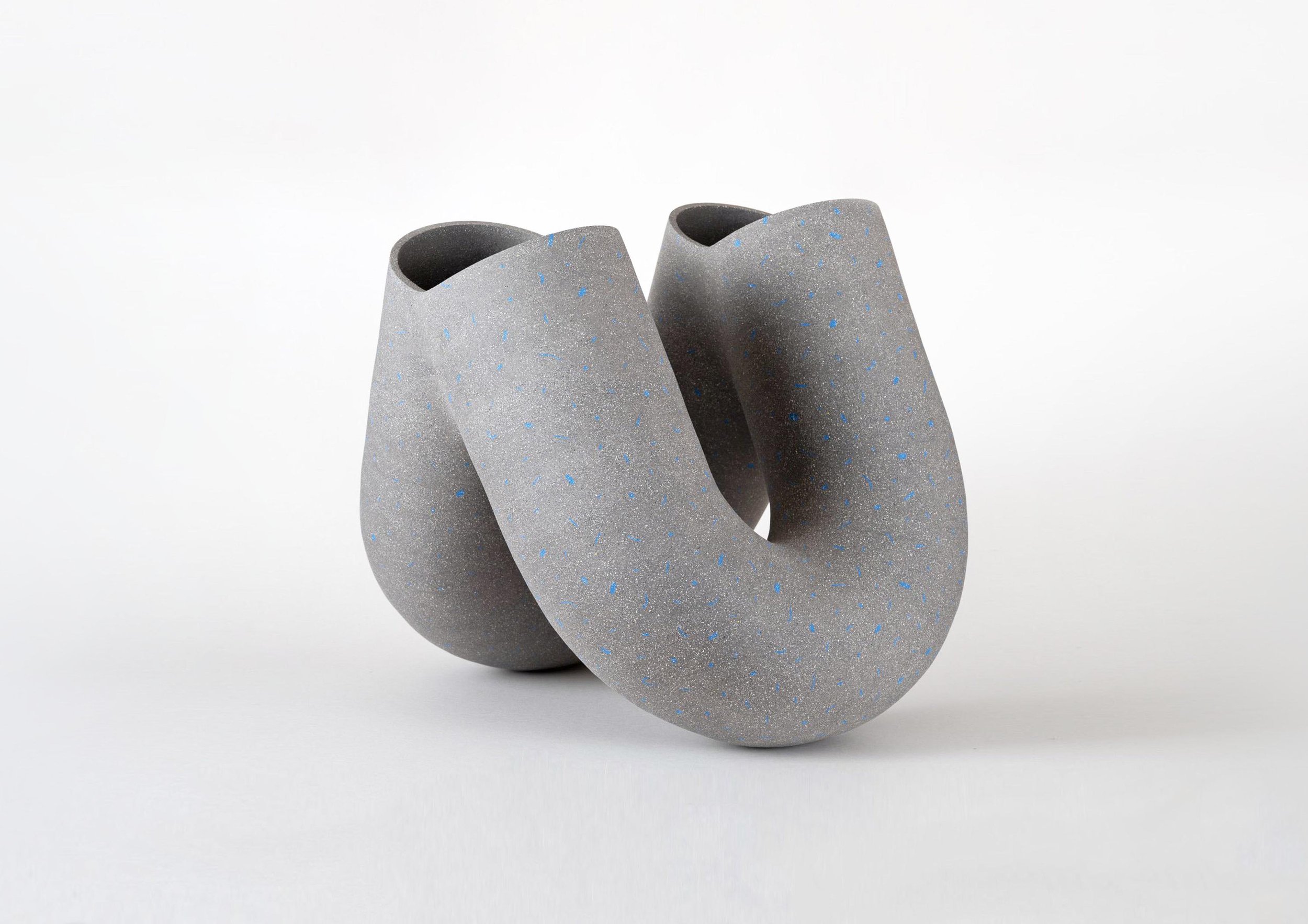












When humans began to use wood-fired kilns to produce ceramic, they manipulated the airflow in the kiln. We design the internal structure, adjust the angles and position of works, and try to manage fire to ensure the production of the pieces. Humans can observe the airflow in kilns through the trace of fire on the finished products. Although most people now use electric or gas kilns, the air still flows between all the pieces. A hole in a kiln works in the same way as the umbilical cord inside a mother’s body — the air inside of the sculptures interacts with the air in the kiln via a hole, similar to the fetus attached to the mother in order to receive oxygen from her.
In Chinese, we use “气” (pronounced as “qì”) to describe air. This multiple-meaning character also symbolizes breath, material energy, life force and energy flow. I’d like to let my works express those energies. Whenever I open the kiln’s door, the hot air comes toward me, material energy and airflow completely present in front of my face. At that moment, the works are breathing together with me; I can listen to their heartbeat. However, when the heat cools down, my enthusiasm disappears. When the works are installed in a specific exhibition space, they do not resonate with me. Therefore, I’m working with holes to represent airflow — not only in a kiln, but also when displayed in a physical exhibition space. Inside and outside spaces are reconnected with each other; empty space in the ceramic sculpture becomes a part of the shape. I can feel the flow of “qì” in the work because we are breathing together; we are sharing the air. For me, space is more active than ever before.
I have tested it out using inflatable plastic to underline this principle through the display. Both inflatable plastic and ceramic need holes to take air in and out, though they have completely different properties. In the MA One Show — A Fish Cannot See the Sea, I displayed a sculpture on an inflatable plinth, which was transformed a bit due to the weight of the work. I tried to present contradictory outcomes by contrasting the air locked in plastic with the air going through ceramic sculptures.
I then developed this idea in my solo exhibition. I utilized a double-layered inflatable plastic ball with two holes, which means the air not only can be pumped into the ball but can also go through and flow in and around it. After the show, I played with the ball, letting my whole body interact with it, pressing air from one space to another. The airflow surrounded me so that I became a part of the work.